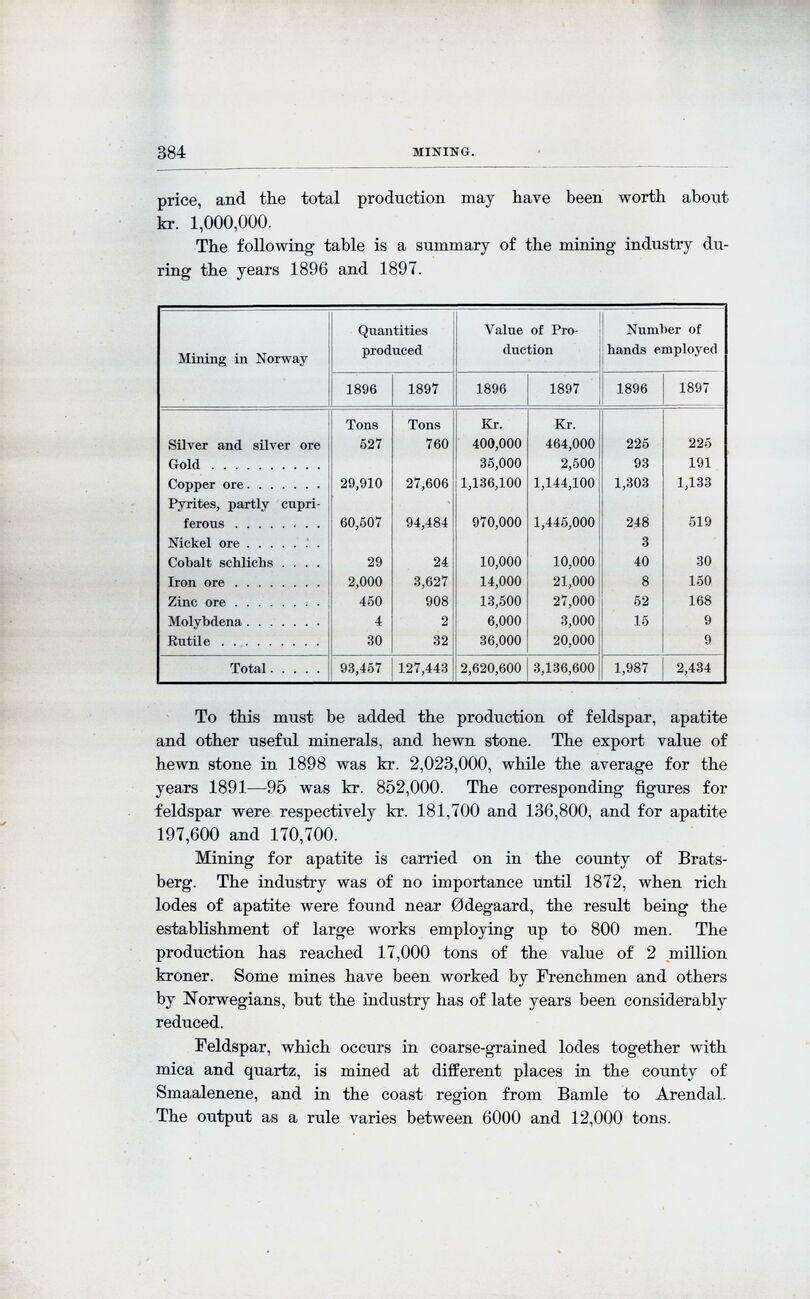
Full resolution (JPEG) - On this page / på denna sida - Mining

<< prev. page << föreg. sida << >> nästa sida >> next page >>
Below is the raw OCR text
from the above scanned image.
Do you see an error? Proofread the page now!
Här nedan syns maskintolkade texten från faksimilbilden ovan.
Ser du något fel? Korrekturläs sidan nu!
This page has been proofread at least once.
(diff)
(history)
Denna sida har korrekturlästs minst en gång.
(skillnad)
(historik)
price, and the total production may have been worth about
kr. 1,000,000.
The following table is a summary of the mining industry
during the years 1896 and 1897.
| Mining in Norway | Quantities produced | Value of Production | Number of hands employed | |||
| 1896 | 1897 | 1896 | 1897 | 1896 | 1897 | |
| Tons | Tons | Kr. | Kr. | |||
| Silver and silver ore | 527 | 760 | 400,000 | 464,000 | 225 | 225 |
| Gold ......... | 35,000 | 2,500 | 93 | 191 | ||
| Copper ore | 29,910 | 27,606 | 1,136,100 | 1,144,100 | 1,303 | 1,133 |
| Pyrites, partly
cupriferous | 60,507 | 94,484 | 970,000 | 1,445,000 | 248 | 519 |
| Nickel ore....... | 3 | |||||
| Cobalt schlichs ... | 29 | 24 | 10,000 | 10,000 | 40 | 30 |
| Iron ore....... | 2,000 | 3,627 | 14,000 | 21,000 | 8 | 150 |
| Zinc ore ........ | 450 | 908 | 13,500 | 27,000 | 52 | 168 |
| Molybdena | 4 | 2 | 6,000 | 3,000 | 15 | 9 |
| Rutile ......... | 30 | 32 | 36,000 | 20,000 | 9 | |
| Total ..... | 93,457 | 127,443 | 2,620,600 | 3,136,600 | 1,987 | 2,434 |
<< prev. page << föreg. sida << >> nästa sida >> next page >>